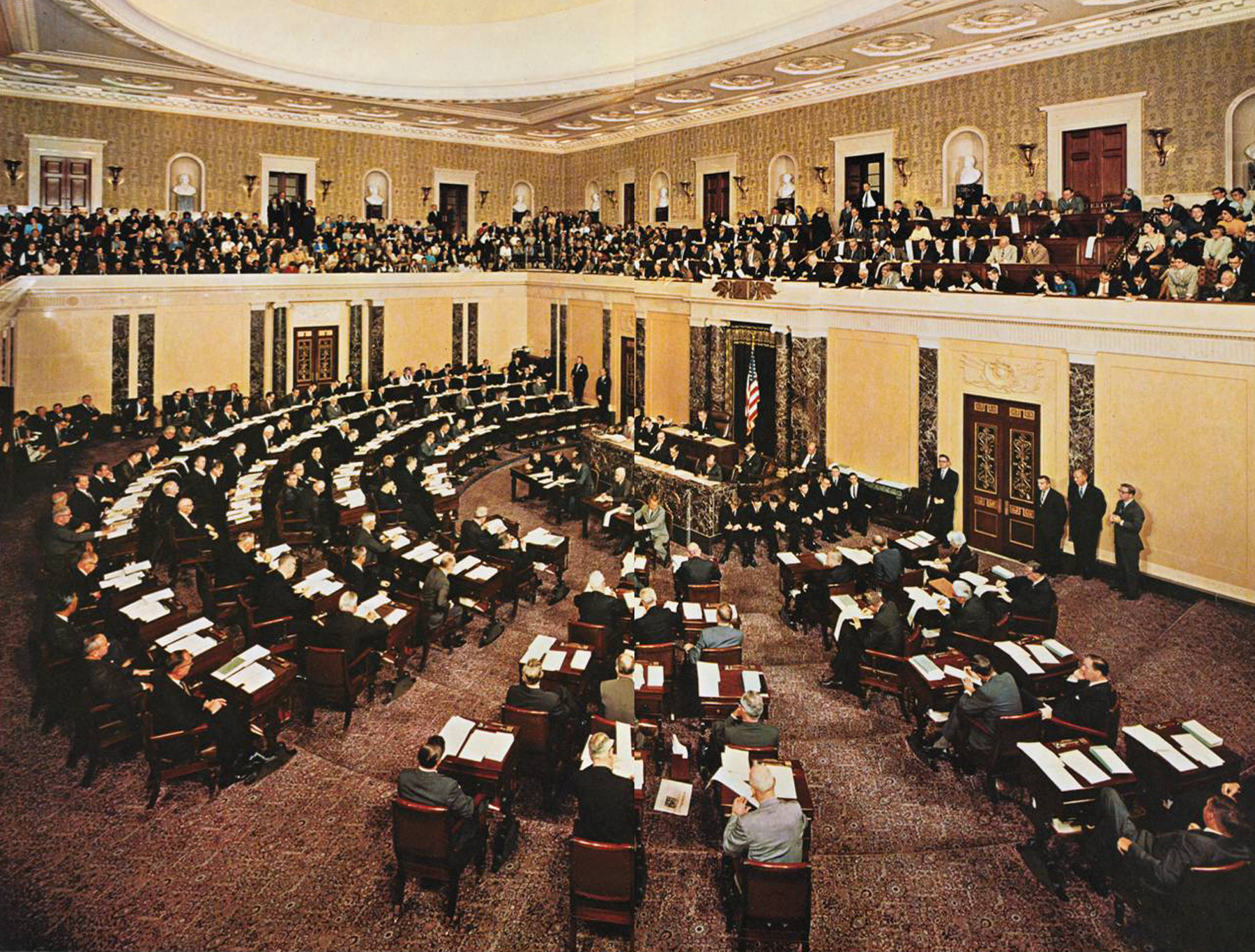In a striking demonstration of cross‐party unity, the U.S. House of Representatives voted 409–2 to approve the Take It Down Act, landmark federal legislation criminalizing the creation and distribution of nonconsensual, sexually explicit deepfake imagery. Co‐sponsored by a bipartisan coalition in both chambers, the measure now proceeds to President Trump’s desk, where it is expected to be signed into law.
This pioneering statute fills a critical gap in existing “revenge porn” laws by explicitly targeting manipulative artificial-intelligence techniques that generate hyperrealistic deepfake videos and images without a subject’s consent. By combining federal criminal penalties, platform-removal mandates, civil remedies, and enhanced protections for minors, the Take It Down Act establishes a multifaceted approach to swiftly remove harmful content and hold perpetrators accountable.
This article provides an authoritative, professional overview of the bill’s journey, its key provisions, the motivations behind its near‐unanimous passage, and the constitutional, technological, and practical considerations that will shape its implementation.
1. A Decisive Bipartisan Mandate
1.1 The Vote Breakdown
On [Date of Vote], House members from both parties coalesced around the Take It Down Act, approving the measure by a resounding 409–2 margin. Only Representatives Thomas Massie (R‐KY) and Eric Burlison (R‐MO) opposed the bill, citing broader concerns about potential free-speech overreach and definitional ambiguity. Twenty‐two members were absent or abstained.
The bipartisan support reflects shared recognition—across ideological lines—of the urgent need to address a novel form of digital exploitation that preys disproportionately on women, minors, and other vulnerable populations.
1.2 Congressional Champions
-
House Sponsors: Representatives Elvira Salazar (R‐FL) and Madeline Dean (D‐PA) led the bicameral push in the House.
-
Senate Sponsors: Senators Ted Cruz (R‐TX) and Amy Klobuchar (D‐MN) shepherded companion legislation in the Senate, which passed earlier this year.
In celebratory remarks, Senator Cruz hailed the outcome as “a historic milestone in the fight against deepfake abuse,” while Representative Dean emphasized that “this bipartisan victory shows Congress can unite to protect citizens’ dignity and safety in the digital era.”
2. From Campaign Promise to Law: Presidential Support
2.1 Trump’s Public Commitment
President Trump publicly endorsed the Take It Down Act in his March address to Congress, stating:
“The Senate just passed the Take It Down Act. Once it passes the House, I look forward to signing this bill into law. And I’m going to use it myself too, because nobody suffers more online than I do.”
While his quip drew mixed reactions, the president’s vocal backing ensured swift Senate approval and signaled his intention to sign the final bill promptly.
2.2 First Lady’s Advocacy
First Lady Melania Trump, through her Be Best initiative, has long championed online safety and the protection of children from digital harms. She convened a White House roundtable last month with survivors of nonconsensual imagery and technology executives, underscoring the bipartisan imperative to safeguard youth and adults alike. Her involvement helped solidify executive‐branch support for the legislation.
3. The Deepfake Threat: Why New Laws Are Necessary
3.1 Understanding Deepfake Pornography
-
Deepfakes employ advanced AI algorithms—particularly generative adversarial networks (GANs)—to fabricate lifelike images and videos that convincingly depict real individuals performing actions they never did.
-
Unlike traditional “revenge porn,” which repurposes actual private images, deepfake technology can produce entirely fictitious sexually explicit content, leaving no original source to trace.
3.2 Scope and Scale of the Problem
-
Prevalence: A 2023 Sensity AI study found that over 90% of publicly circulated deepfake videos are pornographic, with the vast majority targeting women.
-
Victim Profile: Many victims are ordinary citizens—students, professionals, and public figures—whose faces have been digitally superimposed onto explicit scenes.
-
Psychological Impact: Survivors report severe trauma, including anxiety, depression, PTSD, and suicidal ideation. Career, reputation, and personal relationships often suffer irreparable damage.
3.3 Legal Gaps in Existing Revenge Porn Statutes
State laws criminalizing nonconsensual intimate imagery typically address the distribution of real photos or videos shared without consent. However, they rarely cover fully fabricated deepfakes, creating an exploitation gap that the Take It Down Act aims to close.
4. Provisions of the Take It Down Act
4.1 Federal Criminal Offense
-
Intentional Creation or Distribution: It is a federal crime to knowingly create or distribute computer-generated sexually explicit images or videos that depict an identifiable, real person without their consent.
-
Penalties: Offenders face substantial fines and up to five years in prison, with enhanced sentences if victims are minors.
4.2 Platform Removal Mandate
-
Safe Harbor and Liability: Online platforms, including social media networks and file‐hosting services, must remove reported deepfake pornography within 72 hours or risk civil liability.
-
Notice‐and‐Takedown Process: The bill establishes standardized procedures for victims to flag content and for platforms to verify and expunge offending material.
4.3 Victim Civil Remedies
-
Private Right of Action: Victims can sue creators, distributors, and noncompliant platforms for compensatory and punitive damages.
-
Expedited Injunctions: Courts may issue swift injunctive relief to halt further dissemination of nonconsensual deepfakes.
4.4 Enhanced Protection for Minors
-
Stricter Penalties: Deepfake pornography depicting individuals under 18 carries heightened penalties, reflecting the particularly egregious nature of exploiting minors.
-
Mandatory Reporting: Platforms must notify law enforcement and child‐protection agencies immediately upon identifying or receiving credible reports of minor-targeted deepfakes.
4.5 Victim Support and Resources
-
Clearinghouse: The act establishes a federal clearinghouse to coordinate technical assistance, guide victims in content removal, and publicize educational materials.
-
Law Enforcement Training: DOJ will develop training programs for FBI and U.S. attorneys on deepfake forensics and victim support.
5. Robust First Amendment Safeguards
5.1 Narrowly Tailored Definition
By focusing exclusively on nonconsensual, sexually explicit AI‐generated content, the legislation avoids broader speech restrictions. It expressly exempts protected categories—such as political satire, parody, and educational uses—ensuring compliance with Supreme Court precedent.
5.2 Legal Expert Consensus
Constitutional scholars concur that sexually explicit deepfakes produced without consent fall outside First Amendment protection due to their “egregious invasion of privacy and personal dignity.” This targeted scope bolsters the law’s resilience against free-speech challenges.
6. Addressing Opposition and Concerns
6.1 Free Speech and Overbreadth Fears
Critics, including Representative Massie and civil-liberties advocates, caution that:
-
Definitional Uncertainty: The term “identifiable” may prove vague, risking overbroad takedowns.
-
Algorithmic False Positives: Relying on automated filters could lead platforms to remove legitimate content to avoid liability.
-
Weaponization: Malicious actors might file spurious takedown requests to silence lawful speech.
Supporters’ Response:
-
Narrow Scope: The statute’s precise focus on nonconsensual pornography mitigates broader censorship risks.
-
Judicial Oversight: Victims and alleged distributors retain access to prompt judicial review through private suits and injunctive relief.
-
Good-Faith Defenses: Platforms acting in good faith under the takedown process receive limited immunity, discouraging overcensorship.
6.2 Privacy and Verification
Helpline coordinators and privacy experts urge platforms to adopt secure verification methods when processing takedown requests to avoid exposing victims’ personal data.
7. Technology Industry Reactions
7.1 Major Platforms’ Support—and Reservations
-
Meta, Google, TikTok: Public statements praising bipartisan action against deepfake abuse, coupled with calls for clear implementation guidelines to ensure consistent enforcement.
-
Smaller Platforms: Concern about the cost and complexity of deploying advanced AI-detection tools and legal compliance teams.
7.2 Self-Regulation vs. Legal Mandates
Advocacy groups note that voluntary content policies have often fallen short, with exploitative deepfakes lingering online for weeks or months. The Take It Down Act’s legal obligations aim to standardize rapid removal and strengthen victim recourse.
8. Historical and Legislative Context
8.1 Evolution of Nonconsensual Imagery Laws
-
Pre‐2013: No specific statutes addressing intimate imagery; victims relied on harassment or privacy laws.
-
2013 Onward: States began passing “revenge porn” laws, initially focusing on real images shared without consent.
-
Post‐2017 Deepfake Era: As AI-generated content proliferated, advocates called for federal action to address fabricated pornography, given jurisdictional ambiguities across state lines.
8.2 Legislative Journey
-
2019–2022: Introduction of various proposals; limited traction amid partisan gridlock on technology issues.
-
2023 Senate Passage: Cruz–Klobuchar bill clears Senate with strong bipartisan support.
-
2024 House Momentum: Intense lobbying by victims’ coalitions, digital‐rights groups, and women’s organizations propels the bill to final passage.
9. Implementation Challenges Ahead
9.1 Technical Detection and Adaptation
As deepfake algorithms evolve, detection tools must keep pace. Federal support for R&D in forensic AI will be crucial.
9.2 Cross-Border Enforcement
Global hosting of infringing content requires international cooperation—through mutual-legal-assistance treaties and partnerships with foreign governments and platforms—to ensure takedowns beyond U.S. jurisdiction.
9.3 Resource Disparities
Smaller platforms may struggle with the financial and technical demands of compliance. The legislation’s clearinghouse can provide shared tools and best practices to alleviate burdens.
9.4 Legal Precedents
Early court cases under the new statute will establish interpretation norms—particularly around definitions of “identifiable” and deadlines for removal.
10. The Take It Down Act as a Model for AI Regulation
The success of this narrowly focused, bipartisan measure offers lessons for broader AI governance:
-
Targeted Approaches: Addressing clearly harmful applications (e.g., nonconsensual deepfakes) can build consensus more readily than sweeping AI mandates.
-
Multi-Stakeholder Input: Collaboration among lawmakers, technologists, victims’ advocates, and platforms produces balanced, implementable policy.
-
Iterative Refinement: As technology evolves, regulatory frameworks must remain adaptable, with periodic reviews and updates.
11. Conclusion
The Take It Down Act represents a landmark achievement in the quest to protect individuals—particularly women and minors—from a new breed of digital exploitation powered by artificial intelligence. Its overwhelming bipartisan support, combined with carefully calibrated provisions and First Amendment safeguards, positions the United States at the forefront of global efforts to criminalize and swiftly remove nonconsensual deepfake pornography.
While significant implementation challenges lie ahead—ranging from technical detection to cross-border enforcement—the Act lays a robust foundation for victim support, platform accountability, and technological innovation in service of privacy and dignity. As President Trump prepares to sign the bill into law, Congress and stakeholders must continue collaborating to refine enforcement mechanisms and expand AI safeguards, ensuring that the promise of digital innovation does not come at the cost of human rights and personal security.

Adrian Hawthorne is a celebrated author and dedicated archivist who finds inspiration in the hidden stories of the past. Educated at Oxford, he now works at the National Archives, where preserving history fuels his evocative writing. Balancing archival precision with creative storytelling, Adrian founded the Hawthorne Institute of Literary Arts to mentor emerging writers and honor the timeless art of narrative.
